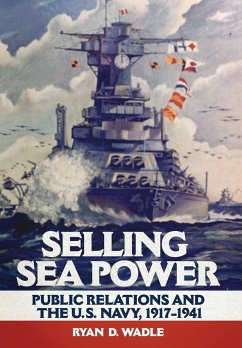The accepted narrative of the interwar U.S. Navy is one of transformation from a battle-centric force into a force that could fight on the "three planes" of war: in the skies, on the water, and under the waves. The political and cultural tumult that accompanied this transformation is another story. Ryan D. Wadle's Selling Sea Power explores this little-known but critically important aspect of naval history. After World War I, the U.S. Navy faced numerous challenges: a call for naval arms limitation, the ascendancy of air power, and budgetary constraints exacerbated by the Great Depression. Selling Sea Power tells the story of how the navy met these challenges by engaging in protracted public relations campaigns at a time when the means and methods of reaching the American public were undergoing dramatic shifts. While printed media continued to thrive, the rapidly growing film and radio industries presented new mediums through which the navy could connect with politicians and the public. Deftly capturing the institutional nuances and the personalities in play, Wadle tracks the U.S. Navy's at first awkward but ultimately successful manipulation of mass media. At the same time, he analyzes what the public could actually see of the service in the variety of media available to them, including visual examples from progressively more sophisticated-and effective-public relations campaigns. Integrating military policy and strategy with the history of American culture and politics, Selling Sea Power offers a unique look at the complex links between the evolution of the art and industry of persuasion and the growth of the modern U.S. Navy, as well as the connections between the workings of communications and public relations and the command of military and political power.
Hinweis: Dieser Artikel kann nur an eine deutsche Lieferadresse ausgeliefert werden.
Hinweis: Dieser Artikel kann nur an eine deutsche Lieferadresse ausgeliefert werden.








